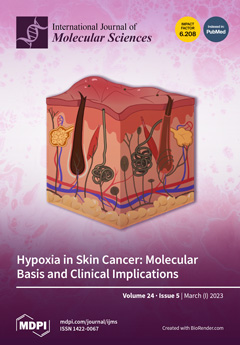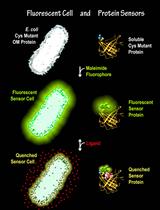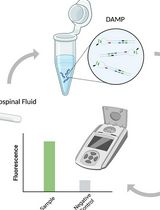- EN - English
- CN - 中文
Differentiation of Bacillus cereus Species Based on Detected Unamplified Bacterial 16S rRNA by DNA Nanomachine
基于 DNA 纳米机检测未扩增的细菌 16S rRNA 区分蜡状芽孢杆菌种群
发布: 2025年03月20日第15卷第6期 DOI: 10.21769/BioProtoc.5243 浏览次数: 2194
评审: Ritu GuptaKyle Stewart SkalenkoAnonymous reviewer(s)

相关实验方案
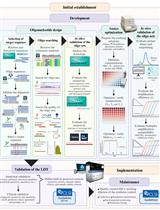
链球菌筛查:基于Panther Fusion® Open Access™平台开发的自动化qPCR实验室自建检测方法
Andy Caballero Méndez [...] Joana C. Bacalhau de León
2025年04月05日 1974 阅读
Abstract
Traditional approaches for the detection and differentiation of Bacillus cereus group species often face challenges due to the complexity of genetic discrimination between species. In this protocol, we propose a simple and straightforward assay based on the detected unamplified bacterial 16S rRNA by DNA nanomachine (DNM). The assay incorporates a universal fluorescent reporter and four DNA binding fragments, three of which are responsible for “opening up” the folded rRNA while the fourth strand is responsible for detecting single nucleotide variation (SNV) with high selectivity. The binding of the DNM to 16S rRNA results in the formation of the 10-23 DNAzyme catalytic core that cleaves the fluorescent reporter and produces a signal, which is amplified over time due to catalytic turnover. The developed biplex assay enables the detection of B. thuringiensis 16S rRNA and B. mycoides at fluorescein and Cy5 channels, respectively. The protocol offers two detection options: one utilizing extracted total RNA and the other involving crude cell lysate. The latter enables a fast and straightforward detection after 1.5 h with a hands-on time of ~15 min. The new protocol may simplify the analysis of biological RNA samples and might be useful for environmental monitoring as a simple and inexpensive alternative to amplification-based nucleic acid analysis.
Key features
• A sensitive and selective amplification-free biplex assay for differentiating Bacillus thuringiensis and Bacillus mycoides based on the 16S rRNA.
• A simple and inexpensive assay alternative to amplification-based nucleic acid analysis, useful in environmental monitoring applications.
• Adaptable for other challenging bacterial strains beyond Bacillus cereus species.
Keywords: B. cereus (蜡状芽孢杆菌)Background
The Bacillus cereus group is known for its diversity and widespread presence in the biosphere. While some species pose a significant risk as foodborne pathogens, others have agricultural or industrial applications [1]. For example, Bacillus cereus (B. cereus) causes two distinct forms of food poisoning [2]. In contrast, B. thuringiensis is widely used as an insecticidal agent and is generally considered non-pathogenic to humans, although it has been implicated in some foodborne outbreaks [3,4]. Species within the B. cereus group, including B. cereus, B. thuringiensis, B. anthracis, and B. mycoides, share extensive genomic and biochemical similarities, complicating their differentiation [5,6]. The true prevalence of B. thuringiensis in foodborne outbreaks remains unclear due to the inherent challenges in genetic differentiation within the B. cereus group. Species classification within this group often relies on phenotypic traits or the presence of species-specific genes such as cry genes [7], but this approach is hindered by polymorphisms [8] and the presence of cry-like genes in other Bacillus species [9] or even different genera [10]. The use of the 16S rRNA sequence as a reliable marker for the discrimination of B. cereus group members has failed in previous studies [11,12] due to high nucleotide conservation in the sequence among the species of this group. Therefore, developing detection strategies that are simple, affordable, and capable of distinguishing subtle genetic differences represents a critical step in microbial monitoring and public health management.
Nucleic acid biosensors enhanced with functional nucleic acids have gained significant attention for a wide range of biomedical applications [13]. Among these, binary sensors equipped with a 10-23 DNAzyme core, known as binary RNA-cleaving DNAzyme 10-23 sensor (BiDz), are particularly prominent for molecular diagnostics [14,15]. The BiDz sensor incorporates two DNA strands, Dza and Dzb (Figure 1), which hybridize to a complementary fragment in the nucleic acid analyte and form a catalytically active Dz core. This facilitates a catalytic reaction that cleaves a reporter substrate labeled with a fluorophore and quencher, thus producing a fluorescent output.
Our continued efforts to refine the BiDz sensor for the detection of nucleic acids led to the BiDz-base nanostructure, the so-called “DNA nanomachine” (DNM) [16–18]. In addition to the binary sensor, this nanostructure includes (1) DNA facilitators, Arm 3 and 4 flanking the binary sensor (Figure 1), aiding in unwinding and invading into structured regions, and (2) a DNA tile that holds all the DNM components together in proximity and increases chances of the signal formation.
This protocol demonstrates the versatility of the multi-armed DNM approach for targeting and discriminating single-nucleotide variation (SNV) in natural 16S rRNA without prior amplification. The assay enables expedited quantification of rRNA content in cell cultures starting from whole cells. The DNM approach uses inexpensive reagents and equipment; it does not require perishable reagents (e.g., protein enzymes) and provides impressive selectivity toward SNV.
However, due to the high sequence similarity of the 16S rRNA among B. cereus, B. thuringiensis, B. mycoides, and B. anthracis, this protocol is specifically designed to detect and differentiate B. thuringiensis and B. mycoides. The SNV targeted by this assay is the only variation identified that allows discrimination between these species, as other SNVs in the 16S rRNA sequence are shared among multiple species, as shown in Table 1.
This protocol is less sensitive than PCR amplification-based methods, which remain the gold standard for nucleic acid detection in biological samples. Further development of DNM technology is anticipated to significantly lower the limit of detection (LOD) and reduce the assay time. Such improvements would not only enhance its competitiveness with state-of-the-art diagnostic techniques but also broaden its applicability to other difficult-to-discriminate pathogens.
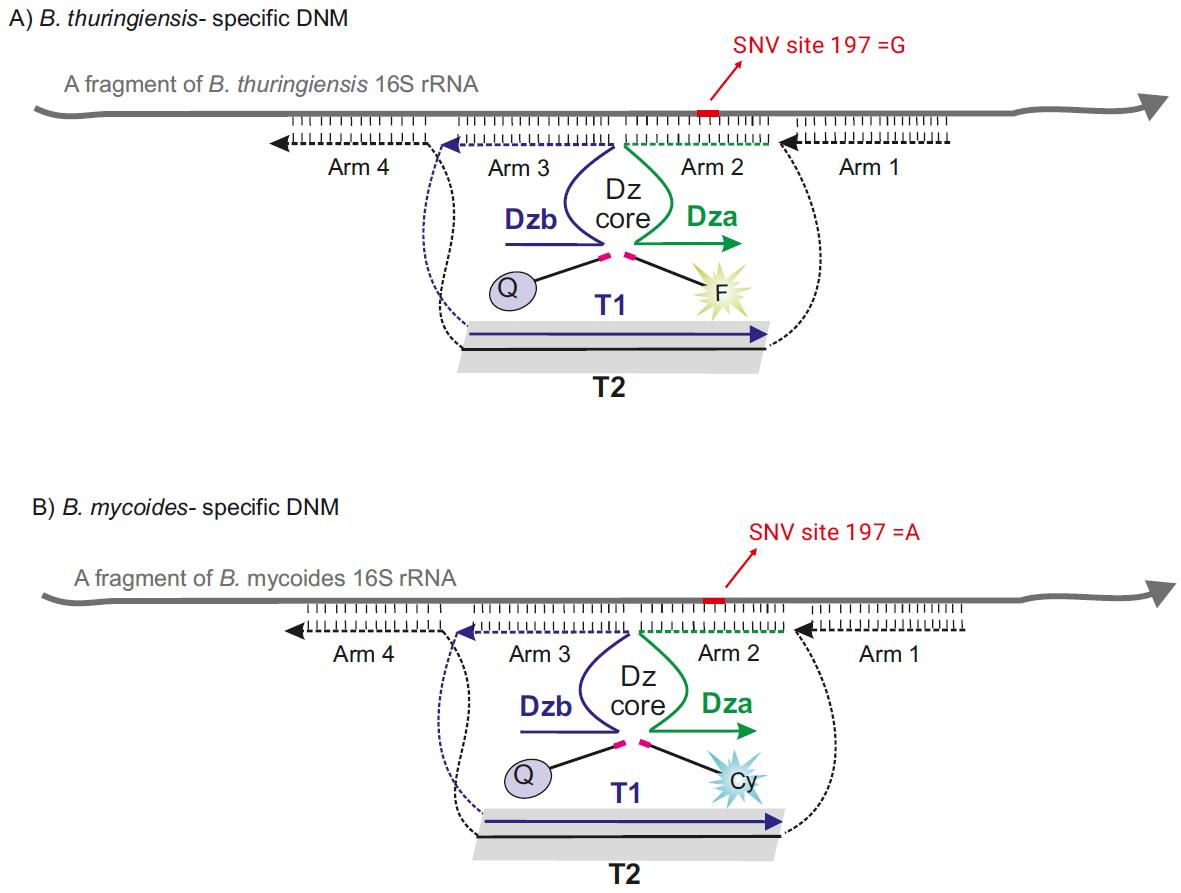
Figure 1. Design of the DNA nanomachine (DNM) used in the protocol. (A) Design of B. thuringiensis–specific DNM. The DNM has a separate arm (Dza) and three arms (Arm 1, Arm 3, and Arm 4) attached to the dsDNA scaffold. Arms 1 and 4 were designed to tightly bind 16S rRNA, thereby unfolding its secondary structure. B. thuringiensis–specific DNM cleaves F-sub, producing fluorescent output at 525 nm. (B) The design of B. mycoides–specific DNM is similar to that of B. thuringiensis, but it cleaves Cy-Sub, producing fluorescent output at 662 nm. B. thuringiensis–specific Dza and B. mycoides–specific Dza are complementary to a fragment of 16S rRNA containing two SNVs (192 and 197). SNV 197 is used to differentiate between B. thuringiensis and B. mycoides, whereas SNV 192 is used to differentiate between the two strains from B. cereus and B. anthracis.
Table 1. Comparison between the 16S rRNA SNV-containing fragments of B. thuringiensis, B. mycoides, and B. cereus.
| Species | Sequence |
|---|---|
| Bacillus thuringiensis | ACAUUUUGAACUGCAUGG |
| Bacillus mycoides | AUAUUUUGAACUGCAUAG |
| Bacillus cereus | ACAUUUUGAACCGCAUGG |
SNV 197 was subject to differentiation and is shown in bold. SNV 192 is shown in bold italic. SNV 182 is underlined [11].
Materials and reagents
Biological materials
1. Cell cultures of Bacillus cereus
2. Cell cultures of Bacillus thuringiensis
3. Cell cultures of Bacillus mycoides
Reagents
1. Nuclease-free water (Invitrogen, catalog number: 1097704)
2. MgCl2 (AppliChem, catalog number: 13139)
3. NaCl (Vekton, catalog number: 557)
4. KCl (Carl Roth, catalog number: 178275)
5. HEPES (Amresco, catalog number: Am-O485)
6. Fine-powder acrylamide 4K (AA) (AppliChem, catalog number: A1090,0500)
7. Fine-powder bis-acrylamide (BA) (Molekula, catalog number: 2279795)
8. Ammonium persulfate (APS) (Carl Roth, catalog number: 9592.1)
9. TEMED (Molekula, catalog number: 68604730)
10. 10× TBE buffer (BioLabMix, catalog number: TBE-500)
11. RiboLock RNase inhibitor (40 U/μL) (Thermo Scientific, catalog number: EO0381)
12. Tryptone (Dia-M, catalog number: 1132GR500)
13. Yeast extract (Dia-M, catalog number: 210933)
14. 50 bp + DNA ladder (Evrogen, catalog number: NL003)
15. Ethidium bromide (BioLabMix, catalog number: EtBr-10)
16. Fine-powder agarose (Helicon, catalog number: SYS-Q0009-0.1)
17. 4× gel loading dye (Evrogen, catalog number: PB020)
18. Fluorescence substrate (DNA synthase, direct order, HPLC purification)
F-sub: 5'- AAG GTT(FAM) TCC TCg uCC CTG GGC A-BHQ1
Cy-sub: 5'- Cy5CAG CAC AAC Cg uCC CTG GGC A-BHQ-2
Note: The stock solutions of the fluorescence substrate and the oligonucleotides mentioned below are prepared at a concentration of 100 μM. These stock solutions are provided in fine-powder form and should be diluted with nuclease-free water according to the manufacturer's instructions. The volume of nuclease-free water required will depend on the quantity in optical units specified by the individual placing the order.
19. Oligonucleotides (Evrogen, direct order standard desalting purification):
T1_thu: 5'- TGC CCA GGGAGG CTA GCT TCA AAA TGT TAT CCG GTA /HEG/ ACA CTT AGG ACT GCG AGA CCG ATG GTC AAG TCAC
T2_thu: 5'- GTA AGT GAC AGC CGA AGC CGC CTT T /HEG/ GTG ACT TGA CCA TCG GTC TCG CAG TCC TAA GTG T /HEG/ TTA GCC CTG GTT TCC CGG AGT TAT CCC AG
Dza_thu: 5'- TCG AAC CAT GCA GT ACAACGAGAGGAAACCTT
Analyte_thu: 5'- TAA GAC TGG GAT AAC TCC GGG AAA CCG GGG CTA ATA CCG GAT AAC ATT TTG AAC TGC ATG GTT CGA AAT TGA AAG GCG GCT TCG GCT GTC ACT T
T1_myc: 5'- TGC CCA GGGAGG CTA GCT TCA AAA TAT TAT CCG GTA TT /HEG/ AGT GCA ATG CCA GAC TTA GTA CCG ATC GGA TAA CCG TT
T2_myc: 5'- AAG TGA CAG CCG AAG CCG CCT TTC /HEG/ AAC GGT TAT CCG ATC GGT ACT AAG TCT GGC ATT GCA CT/HEG/ AGC CCC GGT TTC CCG GAG TTA TCC CAG TCT TA
Dza_myc: 5'- ATT TCG AAC TAT GCA GT ACAACGAGGTTGTGCTG
Analyte_myc: 5'- TAA GAC TGG GAT AAC TCC GGG AAA CCG GGG CTA ATA CCG GAT AAT ATT TTG AAC TGC ATA GTT CGA AAT TGA AAG GCG GCT TCG GCT GTC ACT T
Note: Nucleotides constituting the catalytic core of 10–23 deoxyribozymes are shown in italics. Nucleotides of the Dz strands that are complementary to the reporter substrate are underlined. Ribonucleotides are in lowercase. FAM: 6-carboxyfluorescein; BHQ1: Black Hole quencher 1; Cy5: Cyanine 5; BHQ2: Black Hole quencher 2; HEG: hexaethylene glycol. Tile sequence is in bold.
Solutions
1. Col buffer (see Recipes)
2. 1 μM B. thuringiensis–specific DNM stock (see Recipes)
3. 1 μM B. mycoides–specific DNM stock (see Recipes)
4. 1× TBE buffer (see Recipes)
5. 0.9% NaCl (see Recipes)
6. Lysogeny (LB) broth (see Recipes)
7. 40% acrylamide:bis-acrylamide (AA:BA) (see Recipes)
8. 10% APS (see Recipes)
Recipes
1. Col buffer
| Reagent | Final concentration | Quantity or Volume |
|---|---|---|
| MgCl2 1 M | 200 mM | 10 mL |
| KCl 1 M | 150 mM | 7.5 mL |
| HEPES 1 M | 50 mM | 2.5 mL |
| NaCl 1 M | 15 mM | 0.75 mL |
| Nuclease-free water | n/a | 29.25 mL |
| Total | 50 mL |
2. 1 μM B. thuringiensis–specific DNM stock
| Reagent | Final concentration | Quantity or Volume |
|---|---|---|
| T1_thu 10 μM | 1 μM | 10 μL |
| T2_thu 10 μM | 1 μM | 10 μL |
| Col buffer | n/a | 80 μL |
| Total | 100 μL |
3. 1 μM B. mycoides–specific DNM stock
| Reagent | Final concentration | Quantity or Volume |
|---|---|---|
| T1_myc 10 μM | 1 μM | 10 μL |
| T2_myc 10 μM | 1 μM | 10 μL |
| Col buffer | n/a | 80 μL |
| Total | 100 μL |
4. 1× TBE buffer
| Reagent | Final concentration | Quantity or Volume |
|---|---|---|
| 10× TBE buffer | 1× | 200 mL |
| Deionized water | n/a | 1,800 mL |
| Total | 2,000 mL |
5. 0.9% NaCl
| Reagent | Final concentration | Quantity or Volume |
|---|---|---|
| NaCl | 0.9% | 0.9 g |
| Deionized water | n/a | 100 mL |
| Total | 100 mL |
6. Lysogeny (LB) broth
| Reagent | Final concentration | Quantity or Volume |
|---|---|---|
| Tryptone | 20 g/L | 2 g |
| Yeast extract | 10 g/L | 1 g |
| NaCl | 20 g/L | 2 g |
| Deionized water | n/a | 190.7 |
| Total | 200 mL |
7. 40% acrylamide:bis-acrylamide (AA:BA)
| Reagent | Final concentration | Quantity or Volume |
|---|---|---|
| Acrylamide | 38.96% | 38.96 g |
| Bis-acrylamide | 1.04% | 1.04 g |
| Deionized water | n/a | 100 mL |
| Total | 100 mL |
8. 10% APS
| Reagent | Final concentration | Quantity or Volume |
|---|---|---|
| APS | 10% | 10 g |
| Deionized water | n/a | 100 mL |
| Total | 100 mL |
Laboratory supplies
1. Costar 96-well black polystyrene plate (Corning, catalog number: COS3915)
2. 1–10 μL pipette (Kirgen, catalog number: KG-Pro10)
3. 2–20 μL pipette (Kirgen, catalog number: KG-Pro20)
4. 20–200 μL pipette (Kirgen, catalog number: KG-Pro200)
5. 100–1,000 μL pipette (Kirgen, catalog number: KG-Pro1000)
6. Pipette 10 μL tips (Kirgen, catalog number: KG1111-L)
7. Pipette 200 μL tips (Kirgen, catalog number: KG1212-L)
8. Pipette 1,000 μL tips (Kirgen, catalog number: KG1636)
9. 1.5 mL microcentrifuge tube (Biofil, catalog number: CFT011015)
10. 15 mL centrifuge tube (Biofil, catalog number: CFT011150)
11. Sealing film for PCR plates (Sovtech, catalog number: P-502)
12. Parafilm® M sealing film (Sigma-Aldrich, catalog number: HS234526C)
Equipment
1. Mini Protean Tetra Cell (Bio-Rad, catalog number: 1658001EDU)
2. PowerPacTM basic power supply (Bio-Rad, catalog number: 1645050)
3. Spark multimode microplate reader (Tecan, model: Spark-10M)
4. Water bath (LOIP, model: LB-140)
5. ChemiDocTM Touch Gel imaging system (Bio-Rad, catalog number: 1708370)
6. PCR workstation (Lamsystems, model: 2E-F.002-10)
7. Implen NanoPhotometerTM N60 UV/V spectrophotometer (Implen, catalog number: 15715815)
8. ES 20 orbital shaker incubator (Biosan, catalog number: BS-010111-AAA)
9. Spectrophotometer UV-3000 with cuvettes (Promecolab, catalog number: 63493-16.3000UF)
10. RiOs-DI® 3UV water purification system (Merck Millipore, model: ZRDSVP3WW)
Software and datasets
1. UNAFold Web server
2. Basic Local Alignment Search Tool (BLAST) search tool
3. GraphPad Prism v. 9.3.1
4. CorelDRAW Graphics Suite 2024
Procedure
文章信息
稿件历史记录
提交日期: Nov 27, 2024
接收日期: Feb 7, 2025
在线发布日期: Feb 27, 2025
出版日期: Mar 20, 2025
版权信息
© 2025 The Author(s); This is an open access article under the CC BY license (https://creativecommons.org/licenses/by/4.0/).
如何引用
Ateiah, M., Gandalipov, E. R., Rubel, A. A. and Rubel, M. S. (2025). Differentiation of Bacillus cereus Species Based on Detected Unamplified Bacterial 16S rRNA by DNA Nanomachine. Bio-protocol 15(6): e5243. DOI: 10.21769/BioProtoc.5243.
分类
微生物学 > 病原体检测 > 生物传感器
分子生物学 > DNA > DNA 检测
您对这篇实验方法有问题吗?
在此处发布您的问题,我们将邀请本文作者来回答。同时,我们会将您的问题发布到Bio-protocol Exchange,以便寻求社区成员的帮助。
Share
Bluesky
X
Copy link


